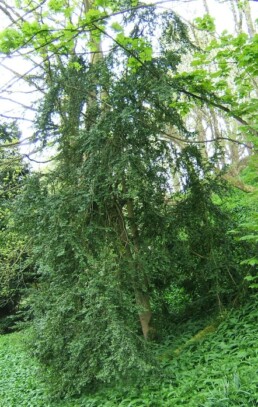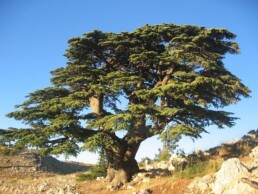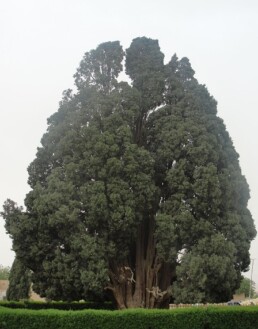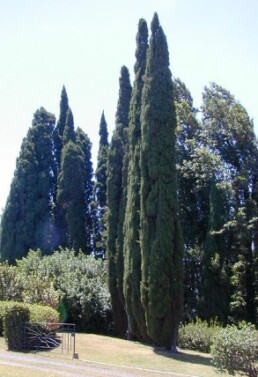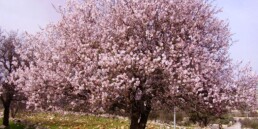Boxwood, Cedar of Lebanon & Mediterranean Cypress
We leave the letter A proceeding quite quickly through the rest as the trees are quite scantily dispersed by their botanical names alphabetically among them. There is only one suggested under the letter B, but in my view technically not a tree but shrub, and two under the letter C, which have already been mentioned but will be described more fully here.
Buxus sempervirens Boxwood Tree (Ashur Tree)
This is a large, slow-growing evergreen shrub to 15ft or more, compact in habit, with small, glossy oval leaves, and small, yellowish flowers. Generally multi-stemmed but with pruning and training it can attain usable stems for intricate fine detailed woodworking. It is common in gardens particularly in Europe as a shrub that can be clipped and shaped into any shape and form you like (Topiary) and excellent hedging. So why would it be mentioned in the bible?
It is because the wood has an almost ivory (Ashur) like appearance. In Ezekiel 27 v 6 we come across a race of people called the Ashurites who were master craftsmen in working with boxwood. Their handiwork must have been much thought of to be called such. Box has been used for hedging and topiary for as long as I have been in trees, and, as long as humans have been gardening. Isaiah mentions Box in Ch.41 v 19 & 60 v 13, simply for its verdant evergreen nature. My prayer, therefore, like his, is that our nature will always be ever green, and malleable enough for God to change into any form He wants us to be.
Cedrus libani Cedar of Lebanon
A truly magnificent tree and helped to build Solomon’s Temple and Palace. They can reach 130 ft in height, with a trunk up to 8 ft thick. The crown is conical when young, becoming fairly level with age and with huge branches. The timber beautifully grained ranging in colour from cream through to purple though easily damaged and bruised. Today It graces many a Cathedral wall, botanic garden, notable estate, public park, yet where it grows in nature there are only 7 of its original population left. It is the second most mentioned tree in the bible, due to its size, its purpose and its uses which is probably why there are far more in captivity than there are in nature. I wonder are we as His church on show as exhibits, or are we original in purpose to go forth and tell? I think lockdown is proving the latter.
Cupressus sempervirens Mediterranean Cypress (Italian Cypress)
A medium-sized evergreen tree 115 ft tall. The trunk will only reach about 3ft in thickness, but it is very long-lived, with some trees reported to be over 4,000 years old. Some have a very upright habit (fastigiate) making growing almost into a tall pencil shaped tree. It has a long logging history, which included the doors of Solomon’s Temple, and St Peters Basilica, as well as intricate and specialised workmanship as it must only be used on Italian Harpsicords, and certain parts of Stradivarius Violins. It is noted for growing under duress yet always being fit for purpose and producing excellent hard durable timber no matter what.
As we approach our seventh week of lockdown may we stay close to our maker, so that He may form us into whatever He desires us to be, so that He can release what was or is held captive within us, as we grow under this duress, to become fit for HIS purpose no matter what!!

